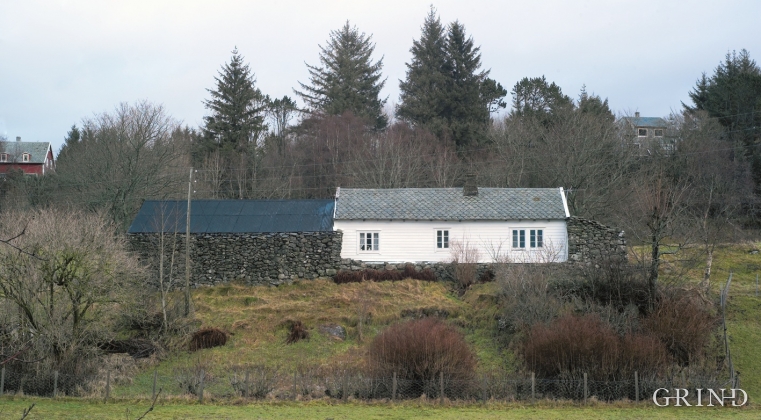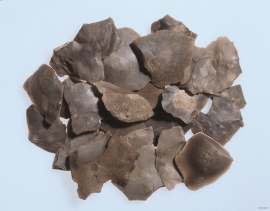Published: 16.02.2013 | Author: Nils Georg Brekke, Svein Indrelid
The extended farm dwelling at Hopland (Svein Nord).
The residential house, built in 1851, is a loft house with kitchen and a stone-built store at the south-western gable, to protect against the battering rain and the hard winter storms. The timber-built cowshed is inside the hayshed, and on the east side there is a longitudinal covered passageway between the row of supporting staves and the outer walls. It is interesting to be able to recognise the relationship in building styles on the farms in the treeless coastal landscape on both sides of the North Sea. The use of stone is obviously even more common in Shetland and on the Norwegian coast, but we find the same thrifty ways of using resources both in the coastal communities in West Norway and in the western isles.
The flint sacrifice from Hopland
A couple of generations ago 26 flint slices – flattish, sharp-edged flint pieces - were found at the farm Hopland. They lay closely packed in the ground, almost as if they had been laid there in a bag or been wrapped in something that had withered and disappeared.
Several similar finds are known, both from West Norway and the rest of the country. The flint slices are nearly always of a high quality and are clearly chosen with great care, they are blanks, half finished, tools, and are laid down as a collection, sometimes in a bog or in wet ground. It is therefore natural to assume that they were intended for a deity or a spirit as a sacrifice.
Such flint sacrifices were especially common towards the end of late Stone Age. The find at Hopland can be dated to between 2,400 and 1,800 B.C.




